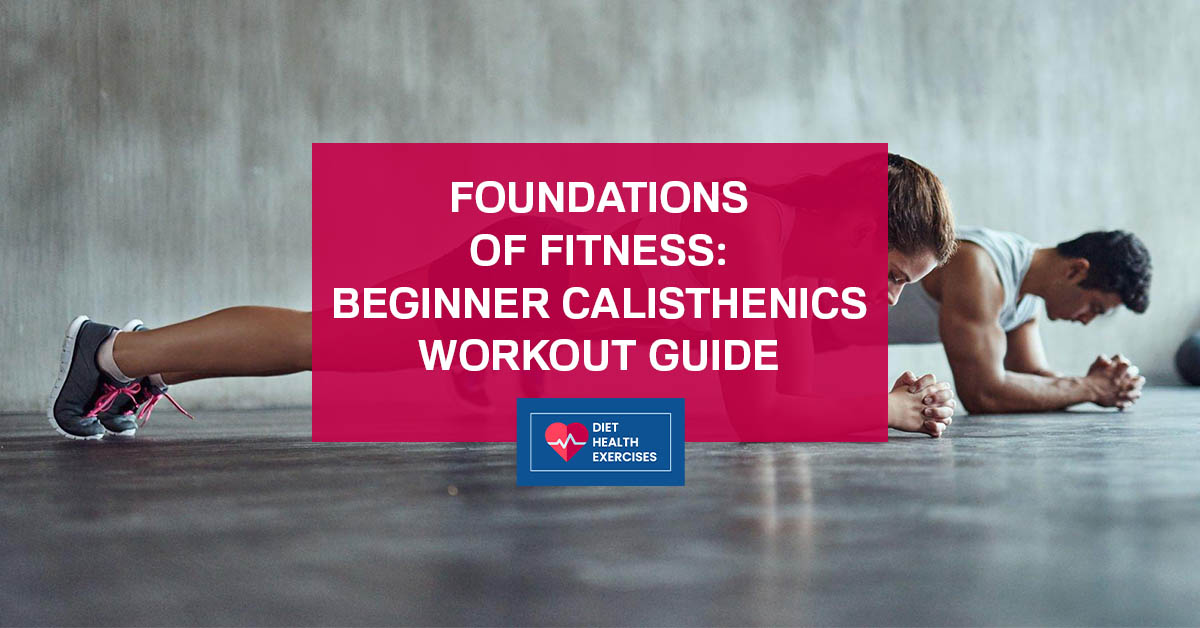Are you looking to kickstart your fitness journey with a workout routine that requires no fancy equipment or expensive gym memberships? Look no further than calisthenics! Calisthenics, also known as bodyweight training, is a fantastic way to build strength, improve flexibility, and enhance your overall fitness level. Whether you’re a beginner or have been working out for a while, calisthenics offers a wide range of exercises that can be modified to suit your fitness level.
In this ultimate beginner’s calisthenics workout routine, we will guide you through a series of simple yet effective exercises that target different muscle groups, helping you achieve your fitness goals. From push-ups and squats to planks and lunges, this routine will challenge your body and leave you feeling stronger and more energized. So, if you’re ready to take your first steps towards a healthier and fitter you, let’s dive into the world of calisthenics and unlock your full potential!
Table of Contents
ToggleWhat is calisthenics?
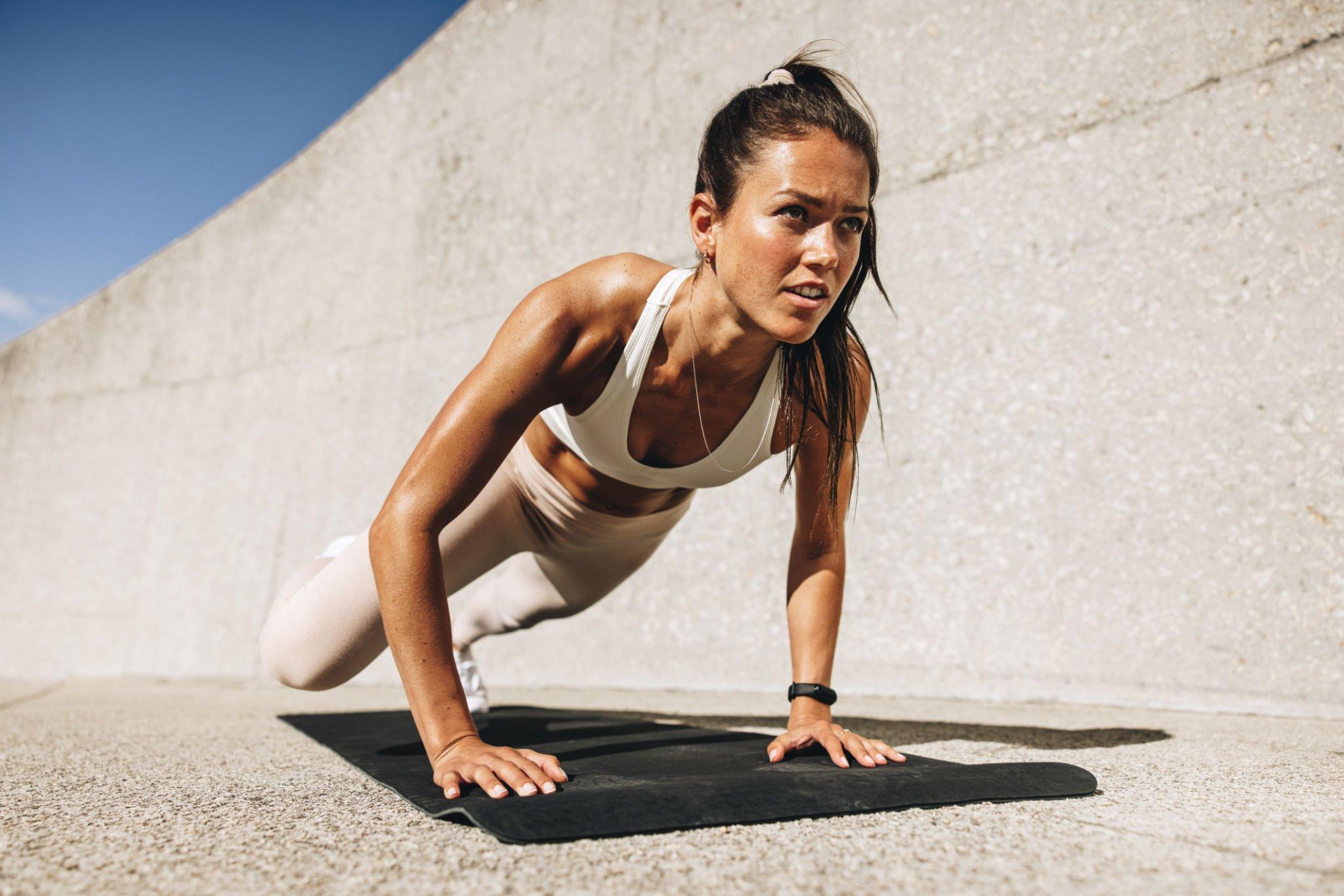
Calisthenics is a form of exercise that utilizes the weight of your own body to build strength, improve flexibility, and increase endurance. It involves performing a variety of movements and exercises that engage multiple muscle groups simultaneously. Unlike traditional weightlifting, which often requires equipment such as dumbbells or barbells, calisthenics workout relies solely on bodyweight resistance. This makes it a cost-effective and accessible form of exercise that can be performed virtually anywhere.
One of the key principles of calisthenics is functional movement. The exercises mimic natural movements that we encounter in our daily lives, such as pushing, pulling, squatting, and jumping. By training these movements, we not only strengthen our muscles but also improve our overall physical performance, making us more efficient in our daily activities.
Calisthenics workout can be modified to suit individuals of all fitness levels, from beginners to advanced athletes. Whether you’re just starting out or looking to take your workouts to the next level, calisthenics provides a scalable and progressive training approach that allows you to challenge yourself at your own pace.
So, whether you’re aiming to build muscle, lose weight, or simply improve your overall fitness, calisthenics offers a versatile and effective solution.
Benefits of calisthenics
Calisthenics offers a wide range of benefits for individuals of all fitness levels. Here are some of the key advantages of incorporating calisthenics into your workout routine:
- Strength and muscle development: Calisthenics exercises engage multiple muscle groups simultaneously, resulting in overall strength and muscle development. By performing exercises such as push-ups, pull-ups, and squats, you can target your upper body, lower body, and core muscles, helping you build a strong and well-rounded physique.
- Flexibility and mobility: Many calisthenics exercises require a good range of motion, which can help improve flexibility and mobility. Movements such as lunges, bridges, and pike push-ups can increase joint mobility and enhance muscle flexibility, leading to better overall movement and reduced risk of injury.
- Functional fitness: Calisthenics focuses on functional movements that mimic real-life activities. By training these movements, you can improve your overall physical performance and functionality in everyday tasks. Whether it’s carrying groceries, climbing stairs, or playing sports, calisthenics helps you become stronger and more efficient in various activities.
- Cost-effective and accessible: Unlike traditional gym workouts that require expensive equipment or memberships, calisthenics can be performed with little to no equipment. All you need is your bodyweight and some basic equipment like pull-up bars, gymnastic rings, or resistance bands, making it a cost-effective and accessible form of exercise that can be done anywhere, anytime.
- Versatility and scalability: Calisthenics offers a wide variety of exercises that can be modified to suit individuals of all fitness levels. Whether you’re a beginner or an advanced athlete, calisthenics provides a scalable training approach that allows you to progress and challenge yourself at your own pace. You can increase the difficulty of exercises by manipulating leverage, range of motion, or adding external resistance, ensuring that you continue to make progress and avoid plateaus.
- Cardiovascular fitness: Many calisthenics exercises, such as burpees, mountain climbers, and jump squats, incorporate cardiovascular elements, helping improve your heart health and endurance. By performing high-intensity calisthenics workouts, you can elevate your heart rate, burn calories, and improve your cardiovascular fitness.
Overall, calisthenics provides a holistic approach to fitness, targeting strength, flexibility, mobility, and cardiovascular fitness. It offers a versatile and accessible workout routine that can be tailored to your specific goals and fitness level. Whether you’re a beginner looking to start your fitness journey or an experienced athlete looking for a new challenge, calisthenics has something to offer for everyone.
Calisthenics vs other types of workouts
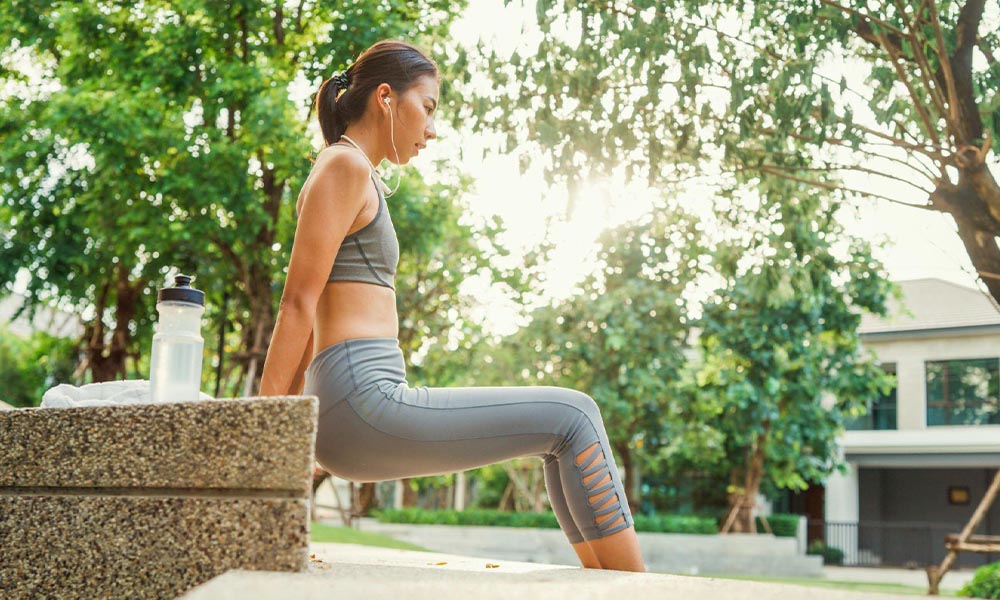
When it comes to choosing a workout routine, there are various options available, each with its own unique benefits. So, how does calisthenics compare to other types of workouts? Let’s take a look at some of the key differences and advantages of calisthenics over traditional weightlifting and cardio exercises.
- Equipment: One of the biggest advantages of calisthenics is that it requires little to no equipment. Unlike weightlifting, which often requires dumbbells, barbells, or weight machines, calisthenics primarily relies on bodyweight resistance. This makes calisthenics workout a cost-effective and accessible form of exercise that can be performed anywhere, whether it’s at home, in a park, or while traveling. On the other hand, weightlifting may require expensive equipment and a dedicated gym space.
- Functional movements: Calisthenics workout focuses on functional movements that mimic real-life activities, such as pushing, pulling, squatting, and jumping. These movements engage multiple muscle groups simultaneously, improving overall physical performance and functionality in everyday tasks. Traditional weightlifting exercises, on the other hand, often isolate specific muscle groups, which may not translate as effectively to real-life movements.
- Flexibility and mobility: Calisthenics exercises typically require a good range of motion, which can help improve flexibility and mobility. Many weightlifting exercises, such as bench press or leg press, may not emphasize flexibility and mobility as much. Cardio exercises, such as running or cycling, also focus primarily on endurance and may not provide the same level of flexibility and mobility benefits as calisthenics.
- Overall fitness: Calisthenics offers a holistic approach to fitness, targeting strength, flexibility, mobility, and cardiovascular fitness. By incorporating a variety of exercises into your routine, you can work on multiple fitness components simultaneously. Traditional weightlifting, while effective for building strength and muscle, may not provide the same level of cardiovascular and mobility benefits as calisthenics. Similarly, cardio exercises may not offer the same level of strength and muscle development as calisthenics.
- Scalability: Calisthenics exercises can be modified to suit individuals of all fitness levels, from beginners to advanced athletes. By adjusting leverage, range of motion, or adding external resistance, you can make exercises easier or more challenging. This scalability allows you to progress at your own pace and continue making gains. Traditional weightlifting exercises may require a certain level of strength and technique to perform safely and effectively, making them less accessible for beginners. Cardio exercises, while generally accessible, may not provide the same level of progressive overload as calisthenics.
In the end, the choice between calisthenics, weightlifting, and cardio exercises depends on your personal goals, preferences, and fitness level. Calisthenics workoutoffers a versatile and accessible form of exercise that targets multiple fitness components simultaneously, making it a great option for individuals looking for a well-rounded workout routine that can be done anywhere, without the need for expensive equipment.
Basic calisthenics workout for beginners
Now that you understand the benefits of calisthenics and how it compares to other types of workouts, let’s dive into some basic calisthenics exercises that are perfect for beginners. These exercises will target different muscle groups and lay the foundation for more advanced movements down the line. Remember to warm up before starting any exercise routine and consult with a healthcare professional if you have any underlying health conditions.
Push-ups
Push-ups are a classic calisthenics exercise that targets the chest, shoulders, triceps, and core muscles. Here’s how to perform a push-up:
- Start in a high plank position with your hands slightly wider than shoulder-width apart.
- Engage your core and lower your body by bending your elbows, keeping them close to your sides.
- Lower yourself until your chest touches the ground or your elbows form a 90-degree angle.
- Push through your palms to extend your arms and return to the starting position.
- Repeat for the desired number of repetitions.
To make push-ups easier, you can perform them on an elevated surface, such as a bench or a wall. On the other hand, to make push-ups more challenging, you can elevate your feet or perform them with one hand.
Squats
Squats are a compound exercise that targets the lower body, including the quadriceps, hamstrings, glutes, and calves. Here’s how to perform a squat:
- Stand with your feet shoulder-width apart and toes slightly turned out.
- Engage your core, keep your chest up, and lower your body by bending your knees and pushing your hips back.
- Lower yourself until your thighs are parallel to the ground or as far as your flexibility allows.
- Push through your heels to return to the starting position.
- Repeat for the desired number of repetitions.
To make squats easier, you can perform them with a chair or a stability ball against a wall for support. To make squats more challenging, you can hold a weight in front of your chest or perform them on one leg.
Planks
Planks are an excellent exercise for strengthening the core muscles, including the abdominals, obliques, and lower back. Here’s how to perform a plank:
- Start in a high plank position with your hands directly under your shoulders and your body in a straight line.
- Engage your core and hold the position for the desired amount of time.
- Focus on keeping your body aligned and avoiding any sagging or arching.
- To increase the challenge, you can perform side planks, where you support your body on one hand and the side of your foot, or perform plank variations such as mountain climbers or plank jacks.
Lunges
Lunges target the lower body, including the quadriceps, hamstrings, glutes, and calves. They also help improve balance and stability. Here’s how to perform a lunge:
- Start by standing tall with your feet hip-width apart.
- Take a step forward with your right foot and lower your body until both knees are bent at a 90-degree angle.
- Push through your right heel to return to the starting position.
- Repeat on the other side, alternating legs for the desired number of repetitions.
To make lunges easier, you can perform reverse lunges, where you step backward instead of forward. To make lunges more challenging, you can hold weights in your hands or perform jumping lunges.
Pull-ups or inverted rows
Pull-ups and inverted rows are exercises that target the muscles of the upper body, including the back, biceps, and shoulders. Pull-ups are performed on a bar, while inverted rows can be done using a suspension trainer or a barbell in a rack. Here’s how to perform a pull-up:
- Hang from a bar with your palms facing away from you and your hands slightly wider than shoulder-width apart.
- Engage your core and pull your body upward by bending your elbows and squeezing your shoulder blades together.
- Pull yourself up until your chin is above the bar or your elbows form a 90-degree angle.
- Lower yourself back down to the starting position.
- Repeat for the desired number of repetitions.
If you’re unable to perform pull-ups, you can start with inverted rows, where you lie underneath a bar or suspension trainer and pull your body upward. Gradually increase the difficulty by adjusting the height of the bar or adding external resistance.
These are just a few examples of basic calisthenics exercises that are perfect for beginners. Remember to start with proper form and gradually increase the intensity as your strength and fitness level improve. Consistency is key, so aim to incorporate these exercises into your routine at least two to three times per week.
Discover your health journey with precision. Calculate your BMI accurately by visiting our page and take the first step towards a healthier you.
Creating a calisthenics workout routine
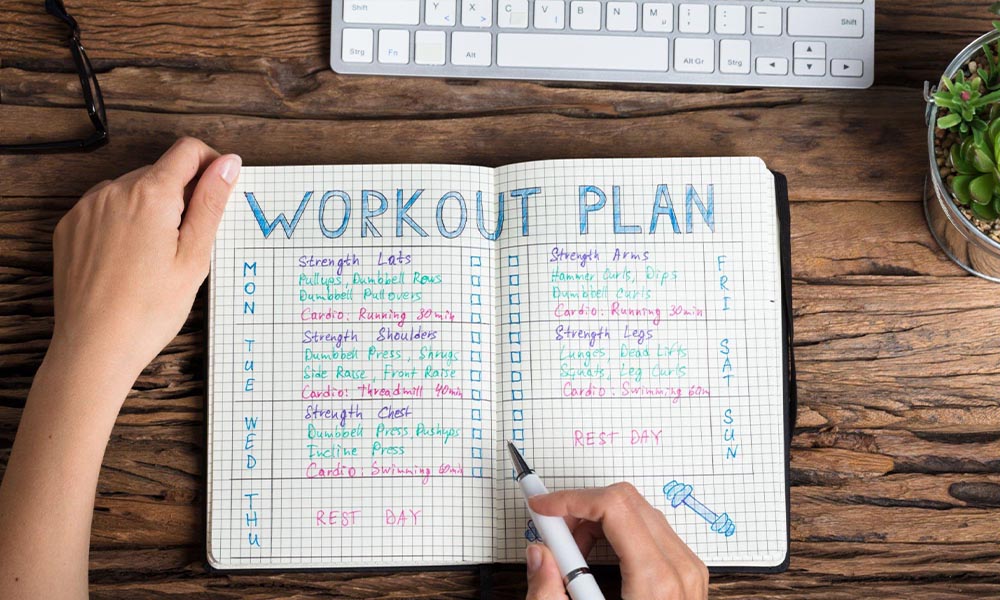
Now that you’re familiar with some basic calisthenics exercises, it’s time to create a workout routine that suits your goals and fitness level. Here’s a step-by-step guide to help you design an effective calisthenics workout routine:
1. Set Your Fitness Goals:
Before designing your routine, define your fitness goals. Do you want to build muscle, increase flexibility, lose weight, or enhance overall endurance? Having clear objectives will help tailor your workout routine to your specific needs.
2. Assess Your Current Fitness Level:
Evaluate your current strength, flexibility, and endurance. This self-assessment will allow you to choose appropriate exercises and set realistic progression targets.
3. Choose the Right Exercises:
Select a variety of exercises that target different muscle groups and movement patterns. Some essential calisthenics exercises include push-ups, pull-ups, squats, lunges, planks, and dips. Choose exercises that align with your goals and challenge your body effectively.
4. Plan Your Routine:
Structure your routine by organizing exercises into sets and reps. For beginners, start with 2-3 sets of each exercise, performing 8-12 reps per set. Allow sufficient rest between sets to recover.
5. Incorporate Progression:
As you become more comfortable with your routine, introduce progressive overload to continue making gains. Increase the number of reps, sets, or intensity of exercises gradually over time to keep challenging your muscles.
6. Focus on Full-Body Workouts:
Ensure your routine includes exercises that engage multiple muscle groups. Full-body workouts promote balanced development and prevent overworking specific muscles.
7. Warm-up and Cool-down:
Never skip a proper warm-up to increase blood flow, improve mobility, and reduce the risk of injury. Likewise, cool down with stretching to aid recovery and maintain flexibility.
8. Rest and Recovery:
Rest is crucial for muscle recovery and growth. Plan rest days between workouts to allow your body to repair itself. Overtraining can lead to injuries and hinder progress.
9. Nutrition and Hydration:
A balanced diet and proper hydration are essential for optimizing your calisthenics routine. Fuel your body with nutrients that support muscle growth and repair.
10. Track Your Progress:
Keep a workout journal to record your exercises, reps, sets, and any adjustments you make. Tracking progress will help you stay motivated and adjust your routine as needed.
11. Adapt and Evolve:
As you gain experience, periodically reassess your goals and adjust your routine accordingly. Introduce new exercises and techniques to keep your workouts interesting and effective.
How to Progress in Calisthenics:
Progression is the key to achieving continuous improvements and preventing plateaus in your calisthenics journey. As your body adapts to your routine, it’s important to introduce new challenges and increase the intensity of your workouts. Here’s how you can effectively progress in calisthenics:
1. Exercise Variations:
Start with foundational exercises and gradually progress to more advanced variations. For instance, if you’re comfortable with standard push-ups, you can move on to diamond push-ups or decline push-ups to target different muscle groups and intensify the workout.
2. Repetitions and Sets:
Increase the number of repetitions and sets as your strength improves. Gradually add more reps to each set or perform an additional set of each exercise. This progressive overload stimulates muscle growth and adaptation.
3. Intensity Techniques:
Incorporate intensity techniques like drop sets, supersets, or paused reps. These techniques challenge your muscles in different ways and break through plateaus.
4. Weighted Calisthenics:
Once bodyweight exercises become easier, you can add weight to increase resistance. Use a weighted vest, backpack, or resistance bands to intensify exercises like squats, dips, and pull-ups.
5. Range of Motion (ROM):
Focus on improving your range of motion for each exercise. Gradually increase the depth of your squats, the height of your pull-ups, or the range of your push-ups to engage muscles more effectively.
6. Time Under Tension:
Control the tempo of your exercises to increase time under tension. Slowing down the eccentric (lowering) phase of movements enhances muscle activation and growth.
7. Rest Periods:
Shorten your rest periods between sets to make your workouts more challenging. This increases the cardiovascular demand and helps build endurance.
8. Advanced Skills:
Challenge yourself with calisthenics skills like handstands, muscle-ups, and front levers. Learning these skills not only adds variety but also requires a higher level of strength and coordination.
9. Balanced Programming:
Ensure your routine maintains a balance between push and pull exercises, upper and lower body movements, and core strengthening. Neglecting certain muscle groups can lead to imbalances and injuries.
10. Listen to Your Body:
Pay attention to your body’s signals. Progression should be gradual to avoid overtraining and injuries. If you experience pain or discomfort, adjust your routine accordingly.
11. Deload Weeks:
Incorporate deload weeks into your routine where you reduce the intensity and volume. This allows your body to recover fully and prevent burnout.
12. Consistency and Patience:
Calisthenics progress takes time. Stay consistent and patient, and remember that small, incremental improvements eventually lead to significant results.
Progression in calisthenics is a continuous journey that requires experimentation and adaptation. By implementing these strategies, you can push your limits, overcome plateaus, and achieve impressive gains in strength, endurance, and overall fitness.
Common Mistakes to Avoid in Calisthenics:

Avoiding common mistakes is crucial for maximizing the effectiveness of your calisthenics workouts and preventing injuries. Here are some common pitfalls to steer clear of:
1. Neglecting Proper Form:
Performing exercises with incorrect form can lead to injuries and limit progress. Prioritize proper technique over the number of reps or sets. Consult tutorials or seek guidance to ensure you’re executing movements correctly.
2. Skipping Warm-ups and Cool-downs:
Skipping warm-ups can lead to strained muscles, while neglecting cool-downs can hinder recovery. Dedicate time to warming up and cooling down with dynamic stretches and static stretches, respectively.
3. Overtraining:
Believing that more is always better can lead to overtraining. Muscles need time to recover and grow. Failing to allow adequate rest can result in burnout, decreased performance, and increased risk of injury.
4. Lack of Progression:
Sticking to the same routine without increasing the challenge can cause plateaus. Incorporate progressive overload, whether through increased reps, sets, intensity, or advanced exercises, to ensure ongoing improvements.
5. Imbalanced Training:
Focusing solely on certain muscle groups while neglecting others can lead to muscular imbalances and posture issues. Ensure a well-rounded routine that targets all major muscle groups.
6. Ignoring Mobility and Flexibility:
Limited mobility and flexibility can hinder proper movement execution. Incorporate stretching and mobility exercises to enhance your range of motion and prevent injuries.
7. Poor Nutrition and Hydration:
Neglecting your diet and hydration can hinder your progress. Provide your body with the nutrients it needs for energy, muscle recovery, and growth.
8. Not Listening to Your Body:
Pushing through pain or discomfort can lead to injuries. Pay attention to your body’s signals and adjust your routine or technique accordingly.
9. Unrealistic Expectations:
Expecting rapid results can lead to disappointment. Calisthenics, like any form of training, requires time and consistent effort to see significant progress.
10. Neglecting Rest and Recovery:
Sleep is essential for muscle recovery and overall well-being. Insufficient rest can impede your gains and hinder cognitive function.
11. Lack of Consistency:
Inconsistent training can hinder progress. Create a manageable routine and stick to it over the long term.
12. Comparing Yourself to Others:
Comparing your progress to others’ can be demotivating and counterproductive. Focus on your own journey and celebrate your personal achievements.
13. Not Seeking Guidance:
Trying to navigate calisthenics alone can lead to mistakes. Seek guidance from experienced individuals, trainers, or online communities to ensure you’re on the right track.
By being aware of these common mistakes and taking steps to avoid them, you’ll be better equipped to make steady progress in your calisthenics journey while minimizing the risk of setbacks and injuries.
Recommended Equipment for Calisthenics Workouts:
One of the appealing aspects of calisthenics is its minimalistic approach to fitness, using your own body weight for resistance. However, certain equipment can enhance your calisthenics routine and help you achieve a wider range of exercises and training variations. Here are some recommended pieces of equipment for calisthenics workouts:
1. Pull-Up Bar:
A pull-up bar is a fundamental piece of equipment for calisthenics. It allows you to perform various pull-up variations, chin-ups, and hanging exercises that target your upper body and core.
2. Parallel Bars or Dips Station:
Parallel bars or a dips station are excellent for performing dips, which are effective for building chest, tricep, and shoulder strength. They also open up possibilities for other exercises like L-sits and leg raises.
3. Resistance Bands:
Resistance bands are versatile tools that can assist or intensify bodyweight exercises. They’re particularly helpful for providing assistance with pull-ups and dips as you work towards unassisted versions.
4. Gymnastic Rings:
Gymnastic rings offer an unstable surface, challenging your stability and engaging more muscles during exercises like ring rows, ring push-ups, and ring dips.
5. Weighted Vest:
A weighted vest allows you to add resistance to bodyweight exercises, making them more challenging and promoting muscle growth.
6. Jump Rope:
Jumping rope is a great way to improve cardiovascular fitness and coordination. It can be incorporated into your warm-up or as a cardio interval during your calisthenics routine.
7. Yoga Mat:
A yoga mat provides cushioning and grip for floor exercises, stretching, and mobility work.
8. Foam Roller:
A foam roller helps with myofascial release and muscle recovery by massaging tight muscles and improving blood circulation.
9. Ab Wheel:
An ab wheel is effective for core training, working your abs and lower back muscles.
10. Timer or Stopwatch:
A timer or stopwatch helps you keep track of rest periods and ensures you’re staying on track during your workout.
11. Outdoor Park or Calisthenics Rig:
If available, an outdoor park or calisthenics rig can provide various bars and platforms for pull-ups, dips, and other exercises in an open-air environment.
12. Comfortable Athletic Shoes:
While many calisthenics exercises are done barefoot or with minimal footwear, having a pair of comfortable athletic shoes for running, jumping, and dynamic movements can be beneficial.
Remember that you don’t need to invest in all of these items to start a calisthenics routine. Begin with the basics and gradually acquire additional equipment as you progress and explore more advanced exercises.
The key is to create a routine that aligns with your goals and utilizes the equipment available to you.
Calisthenics Workout Plans for Different Goals:
Calisthenics offers versatile workout plans tailored to various fitness objectives, including building strength, improving flexibility, and aiding in weight loss. Here are sample calisthenics workout plans for each of these goals:
Strength Building:
Goal: Enhance overall muscle strength and increase your ability to perform advanced calisthenics movements.
Push Day:
- Push-Ups: 3 sets of 8-10 reps
- Dips (Parallel Bars or Rings): 3 sets of 6-8 reps
- Handstand Push-Ups (Advanced): 3 sets of 4-6 reps
Pull Day:
- Pull-Ups: 3 sets of 6-8 reps
- Chin-Ups: 3 sets of 6-8 reps
- Rows (Rings or Horizontal Bar): 3 sets of 8-10 reps
Leg Day:
- Squats: 3 sets of 12-15 reps
- Bulgarian Split Squats: 3 sets of 8-10 reps per leg
- Pistol Squats (Advanced): 3 sets of 4-6 reps per leg
Flexibility Improvement:
Goal: Increase flexibility, mobility, and range of motion for better movement quality and injury prevention.
Dynamic Warm-Up:
- Arm Circles, Leg Swings, Hip Rotations: 5-10 minutes
Mobility Routine:
- Cat-Cow Stretch: 2 sets of 8-10 reps
- Hip Flexor Stretch: 3 sets of 20-30 seconds per side
- Shoulder Dislocates (with resistance band): 3 sets of 10-12 reps
Static Stretching:
- Hamstring Stretch: 3 sets of 20-30 seconds per leg
- Quad Stretch: 3 sets of 20-30 seconds per leg
- Butterfly Stretch: 3 sets of 20-30 seconds
Weight Loss and Endurance:
Goal: Burn calories, improve cardiovascular fitness, and aid in weight loss through high-intensity calisthenics workouts.
Full-Body Circuit (Perform Each Exercise for 30 Seconds, Rest 15 Seconds Between Exercises):
- Jumping Jacks
- High Knees
- Burpees
- Mountain Climbers
- Bodyweight Squats
HIIT Routine (Perform Each Exercise for 45 Seconds, Rest 15 Seconds Between Exercises, Repeat for 3 Rounds):
- Plyometric Push-Ups
- Alternating Lunges
- Bicycle Crunches
- Plank Jacks
Tabata Intervals (20 Seconds Work, 10 Seconds Rest, Repeat for 8 Rounds):
- Squat Jumps
- Push-Ups
- Sit-Ups
- Fast Feet
These sample workout plans serve as starting points. Adjust the intensity, volume, and exercises based on your fitness level and progress. Regardless of your goal, consistency and gradual progression are key to success in calisthenics.
Always remember to prioritize proper form and listen to your body’s signals to avoid overexertion and injury.
Frequently Asked Questions
What is calisthenics?
Calisthenics refers to a form of exercise that uses bodyweight movements to build strength, flexibility, and fitness. It doesn’t involve weights or equipment and is an effective way for beginners to start their fitness journey.
Is calisthenics suitable for beginners?
Absolutely! Calisthenics is perfect for beginners as it uses your body weight as resistance, allowing you to start at your own fitness level and gradually progress as you become stronger.
How do I start with calisthenics?
Begin by learning the basic movements such as push-ups, squats, lunges, and planks. Focus on proper form and gradually increase repetitions as your strength improves.
Can I build muscle with calisthenics?
Definitely! Calisthenics workout can help you build lean muscle mass by progressively challenging your muscles through various exercises. Incorporate variations and increase intensity over time for optimal muscle growth.
What’s a beginner calisthenics workout routine?
A beginner routine might include exercises like push-ups, squats, planks, assisted pull-ups, and leg raises. Perform 2-3 sets of each exercise with proper form and gradually increase the reps as you get comfortable.
How often should I do calisthenics workouts?
Starting with 2-3 times a week is recommended. This allows your muscles to recover and adapt to the new exercises. As you progress, you can gradually increase the frequency.
Can calisthenics help with weight loss?
Yes, calisthenics can aid in weight loss by burning calories and improving overall fitness. Combine calisthenics with a balanced diet for the best results.
What are the benefits of calisthenics over traditional weightlifting?
Calisthenics improves functional strength, flexibility, and balance while also being accessible since it requires minimal equipment. It focuses on compound movements that engage multiple muscle groups, promoting a well-rounded physique.
How important is proper form?
Proper form is crucial in calisthenics to prevent injuries and ensure effective muscle engagement. Take your time to learn each movement correctly and prioritize form over the number of reps.
Can I progress in calisthenics as a beginner?
Absolutely, progression is key. Start with easier variations of exercises and gradually move to more challenging ones. This could mean going from knee push-ups to full push-ups or from supported squats to pistol squats.
Do I need any equipment for beginner calisthenics?
Most beginner exercises require no equipment at all. However, a pull-up bar or resistance bands can be helpful for assisted pull-ups and other advanced variations.
How do I avoid hitting a plateau in calisthenics?
To prevent plateaus, continuously challenge yourself. Increase reps, incorporate harder variations, or even explore more advanced movements like handstands or muscle-ups to keep progressing.
Can calisthenics be done at home?
Definitely! Calisthenics is a versatile workout that can be easily done at home, in a park, or any open space. All you need is your body and some dedication.
Is flexibility important in calisthenics?
Yes, flexibility plays a role in calisthenics as many movements require a good range of motion. Incorporate dynamic stretches and basic yoga poses to improve flexibility alongside your strength training.
How long does it take to see results with calisthenics?
Results vary depending on your starting point, effort, and consistency. With a balanced diet and regular workouts, you can begin to see improvements in strength and muscle definition within a few weeks.
Conclusion:
Embarking on a calisthenics workout journey offers a dynamic and rewarding path to improved fitness and overall well-being. Whether your goal is to build strength, enhance flexibility, or achieve weight loss, calisthenics provides a versatile and effective approach. By setting clear objectives, maintaining proper form, and gradually progressing in your workouts, you can achieve remarkable results.
Remember that consistency, patience, and the willingness to adapt are essential components of your calisthenics success. With dedication and perseverance, you can unlock your potential, push your limits, and enjoy the numerous physical and mental benefits that calisthenics has to offer. So, take that first step, design your personalized workout routine, and embark on a transformative journey toward a healthier and stronger you.
